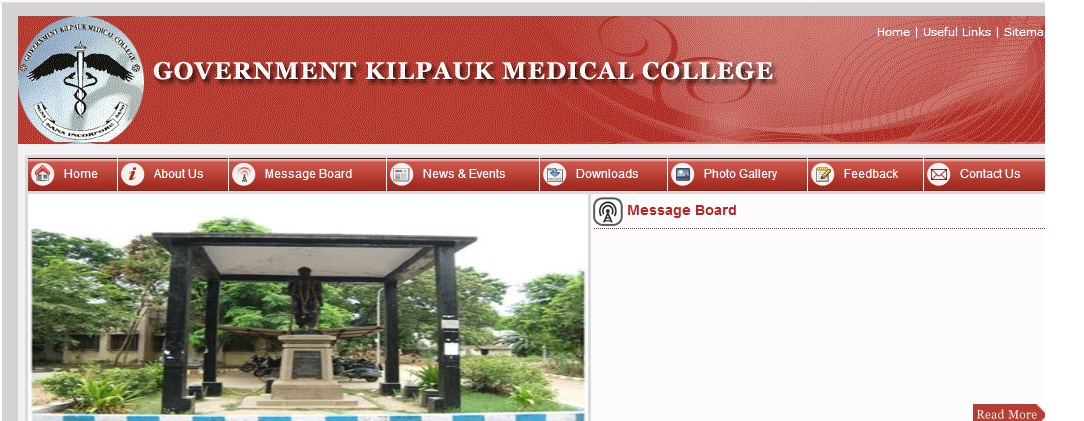Systemic Pathology MD Question Bank : gkmc.in
Name of the University : Government Kilpauk Medical College
Degree : Post Graduate (M.D)
Subject Code/Name : 2012/Systemic Pathology
Paper : III
Document Type : Question Bank
Website : http://www.kmc.ac.in/kmc/index.jsp
Download Model/Sample Question Paper :
2001-2004 : https://www.pdfquestion.in/uploads/gkmc.in/4142-1-68042.pdf
2005-2008 : https://www.pdfquestion.in/uploads/gkmc.in/4142-2-68043.pdf
2009-2010 : https://www.pdfquestion.in/uploads/gkmc.in/4142-3-68044.pdf
Upto 2000 : https://www.pdfquestion.in/uploads/gkmc.in/4142-4-68041.pdf
KMC Systemic Pathology Question Paper
March 2009 :
Sub. Code: 2012
M.D. DEGREE EXAMINATION
Related : GKMC Nervous System & Special Senses MD Question Bank : www.pdfquestion.in/4171.html
Branch III : PATHOLOGY
(Common to all candidates)
Paper III
Q.P. Code : 202012
Time : Three hours
Maximum : 100 marks
Draw suitable diagram wherever necessary. :
Answer ALL questions. :
I. Essay questions : (2 x 20 = 40)
1. Discuss classification and pathogenesis of glomerular diseases.
2. Describe the current concepts in the pathogenesis of atherosclerosis.
II. Write short notes on : (10 x 6 = 60)
1. Pathogenesis of metabolic bone disease.
2. Diabetic nephropathy.
3. Describe autoimmune thyroid disorders.
4. Endomyocardial biopsy.
5. Idiopathic pulmonary fibrosis.
6. Chrondrosarcoma variants.
7. M.E.N. syndromes.
8. FIGO staging of ovarian tumors.
9. Immunological changes in leprosy.
10. Tumors of orbit.

September 2009
Time : Three hours
Maximum : 100 marks
Draw suitable diagram wherever necessary :
Answer ALL questions :
I. Essay questions : (2 x 20 = 40)
1. Classify Brochogenic carcinoma. Discuss its etiopathogenesis, morphology, diagnosis and complications.
2. Classify germ cell tumors. Discuss their etiopathology, clinical features, morphology and prognosis.
II. Write short notes on : (10 x 6 = 60)
1. Ductal carcinoma insitu
2. Cholelithiasis
3. Prostatic intra-epithelial neoplasia
4. Chondroblastoma
5. Types of ependymoma
6. Hepatitis C viral infection
7. Embryonal sarcoma
8. Collagenous colitis
9. Erythema nodosum
10. Nesidioblastosis
March 2010
Time : Three hours
Maximum : 100 marks
Draw suitable diagram wherever necessary :
Answer ALL questions :
I. Essay questions : (2 x 20 = 40)
1. Discuss importance of immunohistochemistry and other markers in soft tissue sarcomas.
2. Classify cirrhosis of liver and describe the etiopathogenesis of
alcoholic cirrhosis.
II. Write short notes on : (10 x 6 = 60)
1. Metabolic bone diseases.
2. Interstitial nephritis.
3. Gastrinomas.
4. Endomyocardial biopsy.
5. Placental pathology in hypertensive diseases of pregnancy.
6. Immunology of diabetes mellitus.
7. Hormone producing ovarian tumors.
8. Tumors of odontogenic epithelium.
9. Para neoplastic syndromes.
10. Pathology of target organ damage in hypertension.
September 2008
I. Essay questions : (2 X 20 = 40)
1. Classify aneurysms. Discuss the etiopathogenesis of aortic aneurysm and complications.
2. Classify ovarian tumours. Discuss the etiopathogenesis and morphology of sex cord stromal tumors.
II. Write short notes on : (10 X 6 = 60)
1. Phyllodes tumur.
2. Medullary carcinoma of thyroid.
3. Angioimmunoblastic lymphaedenopathy.
4. Felty syndrome.
5. Diabetic nephropathy.
6. Haemolytic-uraemic syndrome.
7. Crohn’s disease.
8. Peyronie’s disease.
9. Haemochromatosis.
10. Asbestosis.
Systematic Bacteriology
Answer ALL questions :
I. Essay questions : (2 x 20 = 40)
1. Discuss bacterial genital ulcerative diseases in detail.
2. Enumerate the causative agents of meningitis. Discuss the problem of T.B meningitis in India with special emphasis on newer diagnostic methods.
II. Write short notes on : (10 x 6 = 60)
1. Melioidosis.
2. Anaerobic myositis.
3. Listeria monocytogenes.
4. Vancomycin resistant entero cocci.
5. Inclusion conjunctivitis.
6. Vectorborne bacterial disease.
7. Francisella tularensis.
8. Nonvenereal treponemes.
9. Helicobacter pylori infection.
10. Serodiagnosis of brucella.
September 2009 :
Sub. Code : 2015
M.D. DEGREE EXAMINATION
Branch IV : MICROBIOLOGY
(Common to all candidates)
Paper II : SYSTEMATIC BACTERIOLOGY
Q.P. Code : 202015
Time : Three hours
Maximum : 100 marks
Draw suitable diagram wherever necessary :
Answer ALL questions :
I. Essay questions : (2 x 20 = 40)
1. List the bacterial causes of sexually transmitted diseases. Write in detail the antigenic structure, antigenic heterogenecity and laboratory diagnosis of gonococcal urethritis.
2. Write in detail the morphology, cultural characteristics, pathogenesis and laboratory diagnosis of Helicobacter pylori infection.
II. Write short notes on : (10 x 6 = 60)
1. Shiga toxin
2. Halophilic vibrios
3. Melioidosis
4. Nontyphoid salmonellosis
5. MRSA
6. Streptolysin-o
7. Antibiotic associated diarrhea
8. Spirillum minor
9. Bartonella bacilliformis
10. Cell-wall deficient bacteria
March 2010
Sub. Code : 2015
M.D. DEGREE EXAMINATION
Branch IV – MICROBIOLOGY
(Common to all candidates)
Paper II : SYSTEMATIC BACTERIOLOGY
Q.P. Code : 202015
Time : Three hours
Maximum : 100 marks
Draw suitable diagram wherever necessary :
Answer ALL questions :
I. Essay questions : (2 x 20 = 40)
1. Discuss the pathogenecity and laboratory diagnosis of Clostridium tetani. Describe the vaccines used against tetanus.
2. Discuss the taxonomy of coagulase negative staphylococci. Describe their role in Nosocomial infections.
II. Write short notes on : (10 x 6 = 60)
1. Animal models for cholera.
2. Trachoma – inclusion conjunctivitis agents.
3. Coagglutination.
4. Newer mycobacterial vaccines.
5. Halophilic vibrios.
6. Bacillus anthracis.
7. Nocardia.
8. Vancomycin resistant enterococci.
9. Nonsporing anaerobes.
10. Laboratory diagnosis of leptospira.